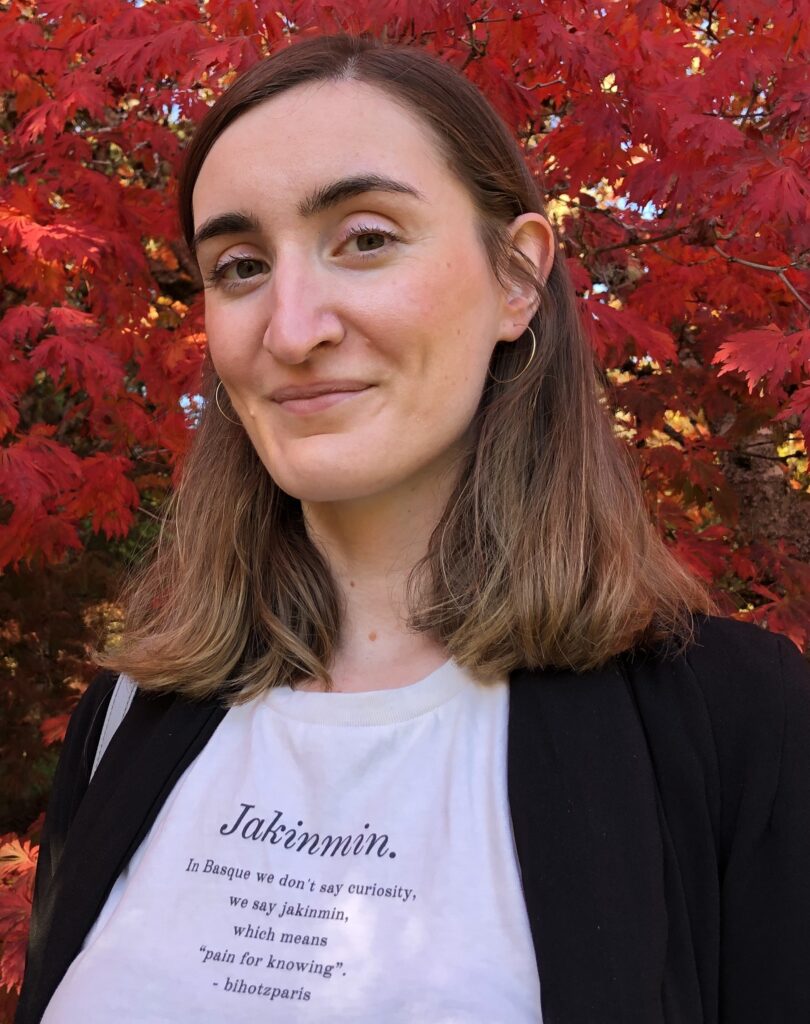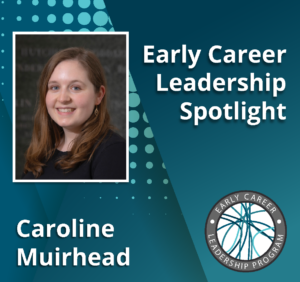We’re taking time to get to know the members of the GSA’s Early Career Scientist Committees. Join us to learn more about our 2021 early career scientist advocates.

Leire Abalde-Atristain
Accessibility Subcommittee
Vollum Institute at the Oregon Health & Science University
Postdoctoral Research Fellow
Research Interest
The nervous system is not static, but rather it undergoes constant change throughout the lifespan of an organism. An extreme case of this is development, when the immature nervous system generates an excess of neurons, resulting in too many connections, which later need to be pruned to ensure proper nervous system maturation. Albeit to a lesser extent, the adult nervous system also needs to be remodeled to allow for plasticity in its connectivity, as well as removing what is dead or harmed.
Glia are the cells in the nervous system that hold the important responsibility of pruning neurons, similar to the way a gardener will trim unnecessary or dead parts of bushes and trees in order to keep their garden healthy. Their recognition of what needs to be kept versus eliminated is exquisitely specific—at any given time they know not only what neuron to target, but also whether they need to remove it as a whole or just a part of it. The key to this precision is thought to be a yet-to-be-unraveled molecular crosstalk between neurons and glia.
As a postdoctoral research fellow in the lab of Dr. Marc Freeman, who pioneered the use of fruit flies to study nervous system glia, I am trying to understand what signals neurons and glia use to communicate when the nervous system needs to be groomed. We think this includes molecules found on the surface of the cell, as well as molecules that are secreted outside the cell. The Drosophila nervous system is ideal to study glia, as it is relatively complex and contains genetically distinguishable types of glia tightly associated with all parts of the nervous system. Importantly, Drosophila glial subtypes are strikingly similar to their mammalian counterparts in terms of development, morphology, molecular makeup, and functionality. Therefore, our scientific discoveries in Drosophila will be informative to mammalian neuroglial communication.
As a PhD-trained scientist, you have many career options. What interests you the most?
Like many of my fellow scientists, I decided to pursue a career in research because I was driven by curiosity and enjoyed solving problems from a young age. I still relish the intellectual challenge of designing the very best experiment I can to answer a scientific question, I am not intimidated by fiddling with new techniques, and I willingly endure the hurdles of the trial and error troubleshooting process, longing for those moments of pure joy when the experiment yields new and interesting results. The opportunity to be so creative every day in my work is a true privilege.
This passion for science extends beyond my own research projects or those I am a collaborator on. I find myself easily invested in other researchers’ science, by engaging in long discussions about their projects and providing feedback to their manuscripts or grant proposals. Likewise, I find it very enjoyable to communicate the research breakthroughs of others’ through outreach activities involving the public of all ages.
In the future I want to stay connected to the science community broadly, hopefully leading a group researching fundamental questions in neuroscience. Alternatively, I am also intrigued about the prospect of working as an editor for a scientific journal or running a research program within a science funding agency or research foundation.
In addition to your research, how do you want to advance the scientific enterprise?
First, I aim to immerse myself deeply into the peer review process. Serving as a reviewer for other’s work, which helps other scientists publish the very best version of their work, is one fundamental way we can advance the science enterprise. Yet there are many issues with how the peer review process is conducted currently. Reviewers lack proper incentives to perform quality review, peer reviewers are alarmingly undertrained, it is still challenging to scrutinize whether the science you are evaluating is rigorous and reproducible, and the pool of reviewers is far from diverse. As such, I plan to train extensively to become a better reviewer by reflecting on my own biases and learning to craft constructive feedback, by participating in initiatives such as PREreview which seek to make the peer review process more equitable and transparent.
Second, I wish to be a relentless advocate for science. During my time in graduate schooI I always took pleasure in reaching out to non-scientists. However, the pandemic has taught me that this should not be a choice but a duty, that scientists need to interact with the general public and convey the importance of science to society. I find it particularly important to better explain to non-scientists how science is done—science is the constant search for truth, but as part of this process it is likely that things we once thought were explained a certain way are proven otherwise, and that does not make science dishonest or untrustworthy. I realized that during the pandemic, amidst the hasty pace of discovery, society often felt very uncomfortable with scientists not giving them absolute answers about how the coronavirus spread and to what extent vaccines were providing us with protection, and thus many blamed or ignored us.
Last but not least, I will fight for making the science community more diverse and tolerant. As a native Spanish speaker and current Chair of MECUSA, the Women in Science Committee at Spanish Scientists in the USA, my goal is to inspire a new generation of Hispanic and Latinx to embark in STEM careers, and to help give their work the visibility it deserves. In parallel, as a member of the Education Committee at the Alliance for Visible Diversity in Science (AVDS) I am educating myself on matters of race and how racism in academia interferes with the advancement of scholars of color. Last but not least, participating in the newly formed ECLP Accessibility Subcommittee, I hope to contribute to making the science community more welcoming to scientists with disabilities.
As a leader within the Genetics Society of America, what do you hope to accomplish?
As a GSA leader I hope to engage with like-minded scientists, who not only share a passion for science but also for making the science community as a whole more inclusive and welcoming to everyone. Within less than a year from joining the program, I feel very fortunate to have interacted with many early career trainees from diverse backgrounds that have motivated me to seek new endeavors and step outside my comfort zone. Specifically, I have joined the newly-established Accessibility Subcommittee, where we will work to identify the barriers scientists with disabilities face to succeed in academia. Collectively as a committee, we will inform the broader ECLP and GSA communities about how to accommodate the specific needs of scientists with a broad spectrum of disabilities, provide guidelines for designing GSA content that is widely accessible, and use the GSA as a platform to advocate for and give visibility to scientists with disabilities. As part of the first cohort for this initiative I hope that through our groundwork we will inspire other early career scientists to continue this enterprise in the future.
Furthermore, I will seize every chance the GSA gives me as a platform to interact with the broader genetics community as well as the public interested in genetics research. I hope that through this exposure plus the skills learned from the numerous career development opportunities provided within the ECLP program I will become a more effective science communicator and advocate for science.
Previous leadership experience
- Chair of Women in Science Committee at Spanish Scientists in the USA (ECUSA), Present
- Co-Chair of Neurodegeneration session, Drosophila 2021 Conference
- Coordinator of “Work In Progress” seminar series, Vollum Institute at OHSU, 2020-2021
- Member of Education Committee, Alliance for Visible Diversity in Science at OHSU, 2020-Present
- Baltimore Brain Series Organizing Committee at Johns Hopkins University, 2019
- Greater Baltimore Society for Neuroscience Steering Committee, 2018
- Co-president of Hopkins Biotech Network at Johns Hopkins University, 2017-2018














